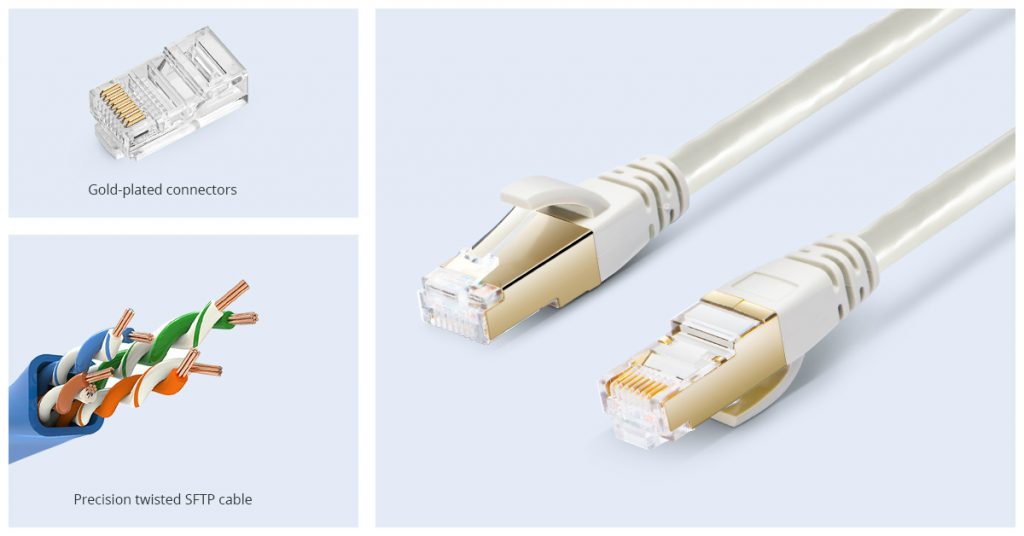In fact, there is a large range of patch cords including Cat5e, Cat6, Cat6a, Cat7 and Cat8 cables in the market. Different types of twisted-pair copper cables may be used for diverse cabling deployment. Here gives a brief introduction to these cables.
Cat5e
Cat5e patch cable (Category 5e) is developed by TIA/EIA in 2001 to improve certain cable characteristics. It was made to support 1000Mb/s and 100MHz within 100 meters of cable. Cat5e cable is fully backward compatible with all the previous categories. Composed of four pairs of wires, this Cat5e Ethernet cable is usually used for premise wiring, or deployed in the home networking environment.
Cat6
Cat6 Ethernet cables (Category 6) can support up to 10 Gbps and frequencies of up to 250 MHz. They feature thicker sheaths in comparison to Cat5e and they are not compatible with Cat3 cables. Though standard Ethernet supports distances of up to 100 meters, cable Cat6 usually supports less than 55 meters (depending on crosstalk) when transmitting 10 Gbps speed. Well, it is optimized for VoIP telephony.
Cat6a
Cat6a cable (Category 6a) supports twice the bandwidth frequencies of Cat6 cable, at a standard frequency rate of 500MHz. Cat6a is able to support 10Gigbit up to 100 meters. And its sheathing is robust, helping eliminate alien crosstalk (AXT). Being considerably thicker than Cat6, Cat6a is less flexible to work with, and therefore, better suited for industrial environments.
Cat7
Cat7 cable (Category 7) is ideal for switches, patch panels or other equipment in the high-density data center, supporting 10Gbps within 100 meters. It is also capable of transmitting up to 40Gbps at 50 meters and even 100Gbps at 15 meters. This cable has a standard frequency of 600MHz. It is stiff compared to previous generations due to the extensive shielding to reduce attenuation. However, the shielding makes Cat7 cable less flexible and manageable. Moreover, Cat7 has not been approved as a cable standard for telecommunications up to now.
Cat8
Cat8 cable (Category 8) is the next generation twisted-pair copper cabling standard specified by ANSI/TIA-568-C.2-1. It operates at a frequency of up to 2 GHz (2000 MHz) for up to 30 meters of cabling. The physical appearance of Cat8 cable is similar to lower category cables and still terminated in RJ45 connections. Cat8 network cable is also backward compatible with its previous versions. Designed to support 25GBASE-T and 40GBASE-T applications, it is suitable for small or middle enterprise LANs, especially for data center switch-to-server interconnections.

 汉信
汉信

